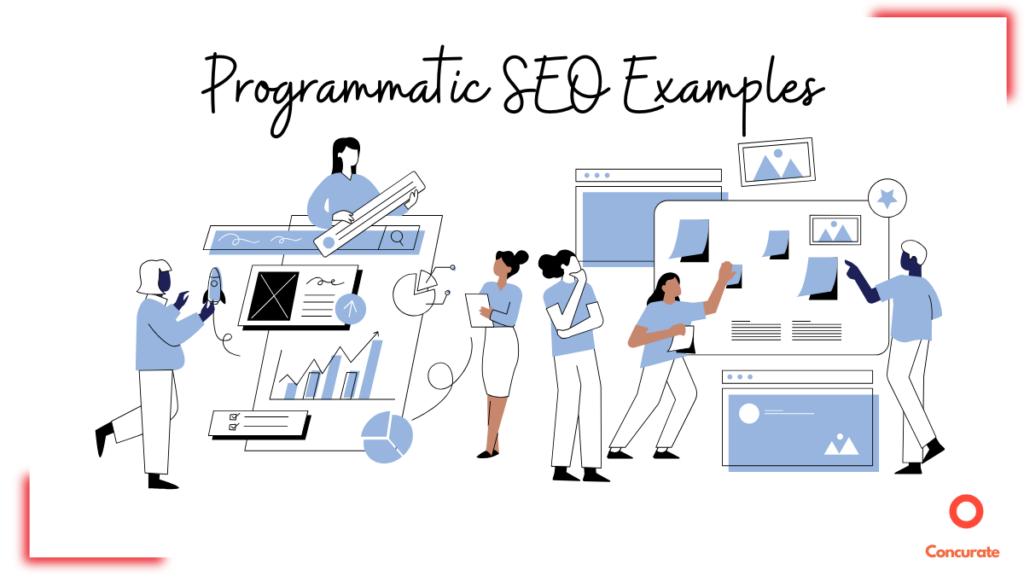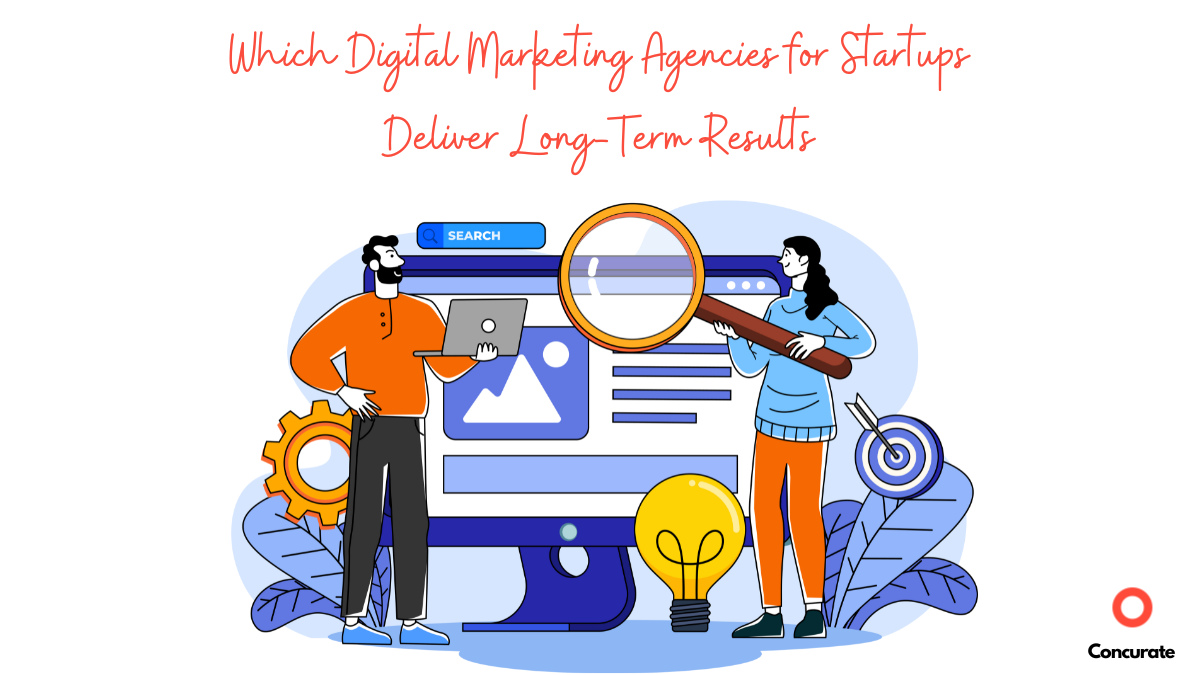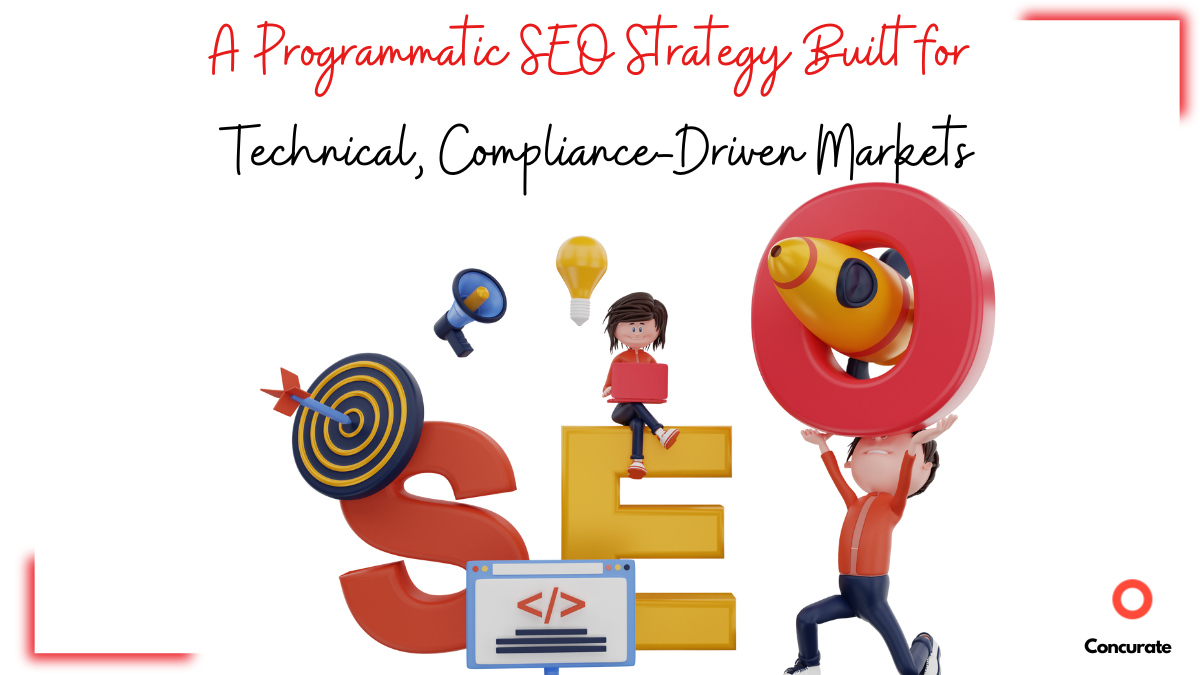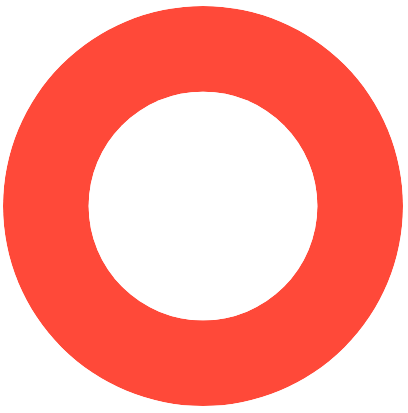Programmatic SEO Examples: How Top SaaS Companies Scale Organic Traffic
| TL;DR: This guide breaks down 6 real-world programmatic SEO examples from leading SaaS brands—Zapier, Atlassian, Canva, GetLatka, and Datacipher. Each case shows how programmatic SEO drives massive organic traffic, leads, and sign-ups by scaling high-value, intent-focused pages. Learn proven strategies, key takeaways, and actionable steps to replicate their success for your own SaaS business. |
When you look at the best programmatic SEO examples, one thing is clear: Programmatic SEO isn’t a shortcut—it’s a tool. When used skillfully, it can scale your content and drive leads and signups. But when poorly used, it can do more harm than good.
The key to success with programmatic SEO lies in creating pages that solve real problems, answer specific questions, and deliver genuine value. If your content is repetitive or shallow, Google will catch on—and drastically reduce site visibility in search results.
As Neil Patel aptly puts it, “Programmatic SEO can be incredibly powerful, but it comes with several limitations you need to be aware of.”
So, how are top SaaS companies getting it right? What tactics work best for SaaS or B2B SaaS specifically? How much content can be repetitive?
In this post, we’ll answer these questions and unveil six programmatic SEOs done right. Additionally, we will offer inspirational examples to help you build a solid programmatic SEO strategy.
No SaaS CMO can afford to ignore these in 2025, as AI tools make scaling content smarter and easier than ever.
Six Compelling Programmatic SEO Examples to Guide Your Strategy
If you search ‘[Tool A] + [Tool B] integration’ on Google, where Tool A and Tool B are commonly used SaaS tools, you would see Zapier’s pages consistently ranking on the first page. Why? Because they deliver exactly what users need. The real magic happens when Zapier turns this curiosity into sign-ups with umpteen CTAs on the pages. This makes its programmatic SEO strategy a well-oiled, leads and signups-driving machine.
Even without heavy automation, insights from 3CX’s content strategy prove that structured intent-based content can deliver programmatic-level scalability.
If you’re sitting there thinking, “How do I make programmatic SEO work for my SaaS product?” –awesome! Good. We’re diving into six programmatic SEO examples that show how companies have taken this strategy to the next level:
- Zapier
- Atlassian
- Canva
- GetLatka
- Datacipher
- ElevenLabs
Also read – How to Win at SEO With a Five Person In-House Team: Omnisend Playbook.
1. Zapier
Zapier is one of the most widely used automation tools that integrates over 3,000 applications and services to automate repetitive tasks, enhance efficiency, and streamline operational workflows–all without requiring a single line of code.
At the heart of this widespread adoption is the company’s programmatic SEO strategy, which enables it to dominate the search results regarding integration keywords. According to Ubersuggest, Zapier attracts over 16.2 million organic visitors and ranks for nearly 1.3 million organic keywords.
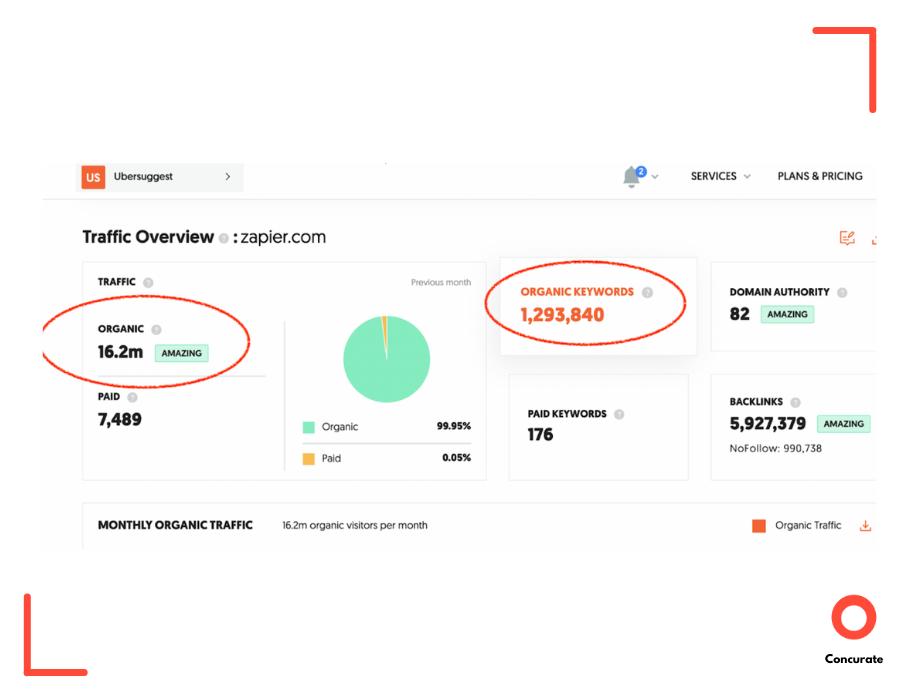
Google is abundant with integration-related queries, such as those shown in the image below, and the Zapier SEO strategy targets these searches.

Zapier has created web pages optimized for specific app integrations, such as “Google Sheets + ChatGPT integration,” “Google Sheets + Slack integration,” or “Google Sheets HubSpot integration.”
Each page follows a predefined structure that includes integration details, benefits, and step-by-step setup guides. To further enhance the user experience, these pages include comprehensive guides and real-world use cases, helping users understand how to leverage the integrations to solve specific operational challenges effectively.
This strategy ranks Zapier high for numerous long-tail keywords, as illustrated in the image below.
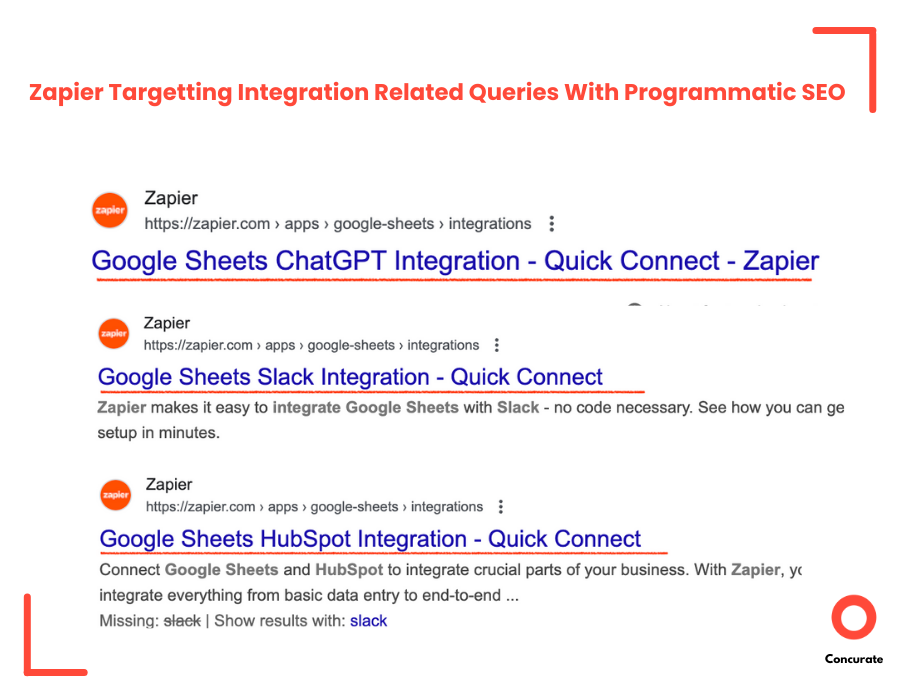
Every Zapier page that ranks for these keywords has umpteen CTAs to drive signups.
2. Atlassian
Atlassian–the mastermind behind Jira, Confluence, and Bitbucket–has long been a titan in the collaboration and productivity tools space. To ensure these solutions are easily discoverable by a vast and relevant audience, Atlassian employs a robust programmatic SEO strategy that targets users seeking information on specific tools and use cases.
For instance, as shown in the image below, users frequently search Google for Jira-related use cases. Atlassian addresses this demand by creating highly targeted content designed to meet these specific needs.
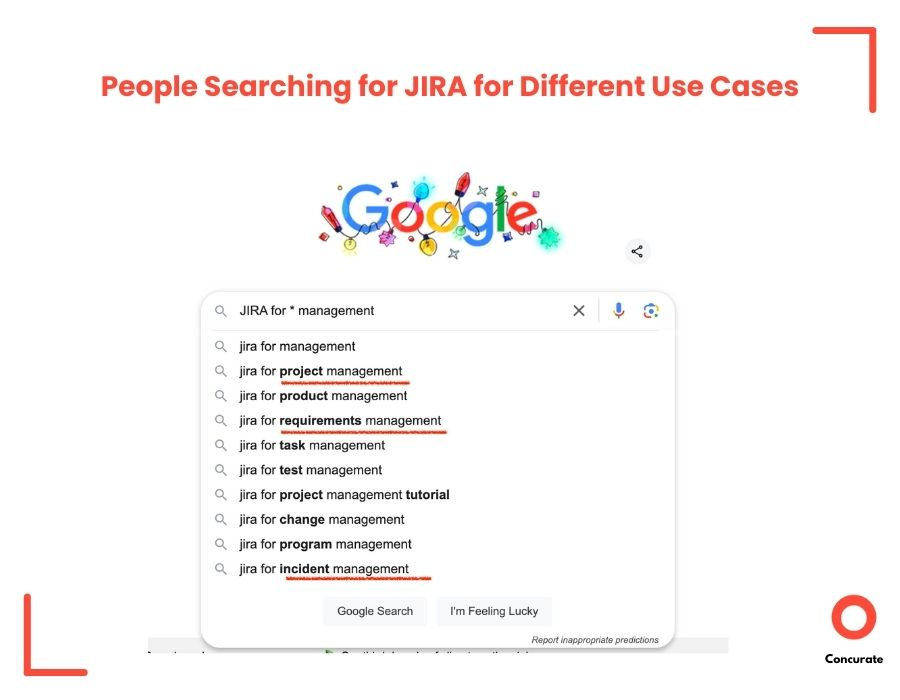
Atlassian has developed detailed, dedicated landing pages for key use cases, such as “Jira for agile project management,” “Jira for requirements management,” or “Jira for incident management.” These pages outline the core benefits of each tool, explain real-world applications, and include FAQs to address user queries.
By targeting long-tail keywords associated with its tools and their different applications, Atlassian consistently ranks top for relevant search results. This strategic approach drives more site visitors, attracts higher-intent (people likely to use Atlassian products) traffic, and generates higher-quality leads.
The effectiveness of this strategy is evident in the search results below, where Atlassian appears at the top for Jira-related queries across various use cases.
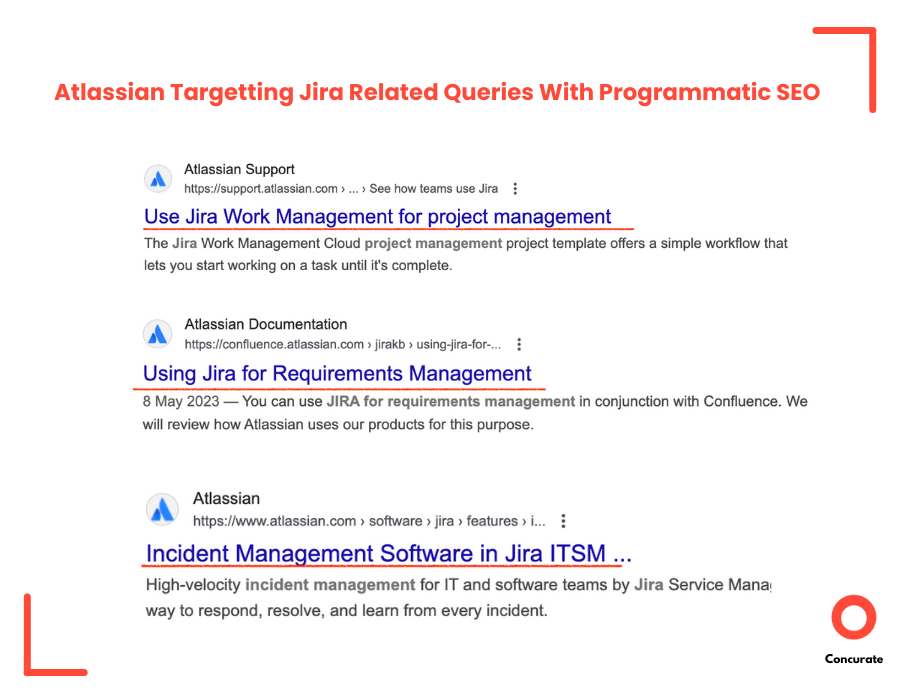
Want to improve your ChatGPT visibility? Download our free 13-point checklist:
3. Canva
In recent years, Canva has become the go-to design platform for anyone looking to create stunning visual content. And its user-friendly drag-and-drop interface and extensive library of templates, graphics, fonts, and animations make design accessible to everyone.
But behind Canva’s success lies a simple yet brilliant programmatic SEO strategy that fuels massive organic traffic. Therefore, to understand this better, let’s take a closer look at Canva’s approach to design templates.
As shown in the image below, people frequently search for different types of card templates for free on Google. Canva taps into this demand by creating targeted landing pages optimized for these searches.
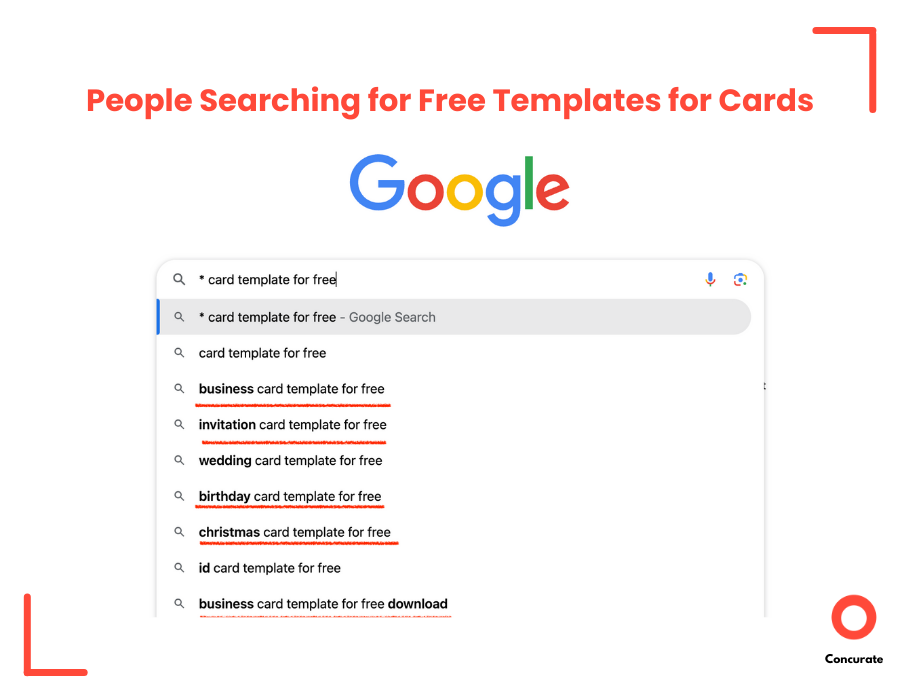
Canva’s programmatic SEO strategy involves creating hundreds of landing pages for different templates. Each page targets a specific long-tail (detailed queries from a niche audience) keyword. For example, “christmas card template for free” or “business card template for free.” In fact, these pages are systematically created using predefined templates and dynamically populated with keyword-rich descriptions, sample designs, and even user-generated content.
With thousands of keyword-optimized web pages in its arsenal, Canva dominates search engine results for template-related queries, drawing in a highly relevant audience.
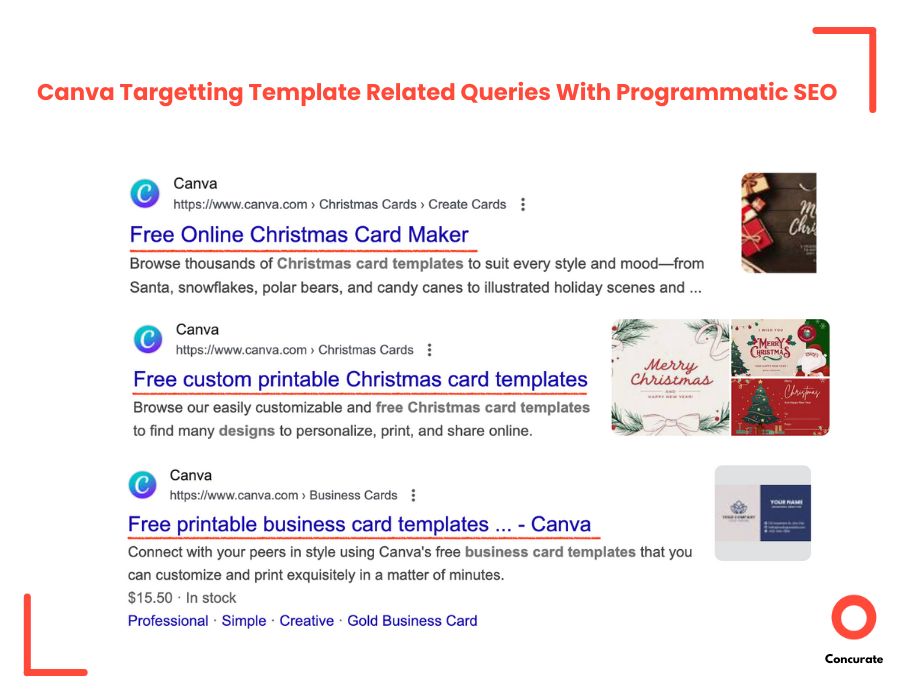
Once users land on these pages, they are guided to sign up, explore, and use Canva’s extensive design resources. The seamless user experience significantly increases the probability of subsequent sign-ups and paid conversions.
Also read – Similarly, The Year of Experiments: How Boomerang Boosted ARR by 500K Through Iterative Marketing Tests.
4. GetLatka
GetLatka is a highly sought-after B2B database that provides in-depth insights into revenue data, funding details, and growth metrics of different SaaS companies. The platform sets the stage for founders, investors, VCs, and executives to discover and analyze accurate intelligence in the SaaS ecosystem.
Searches for SaaS business information, such as revenue in a given year, funding rounds, and growth rates, are common on Google. For example, as illustrated in the image below, users actively search for revenue for SaaS businesses like Boomerang, ClickFunnels, and Loom.
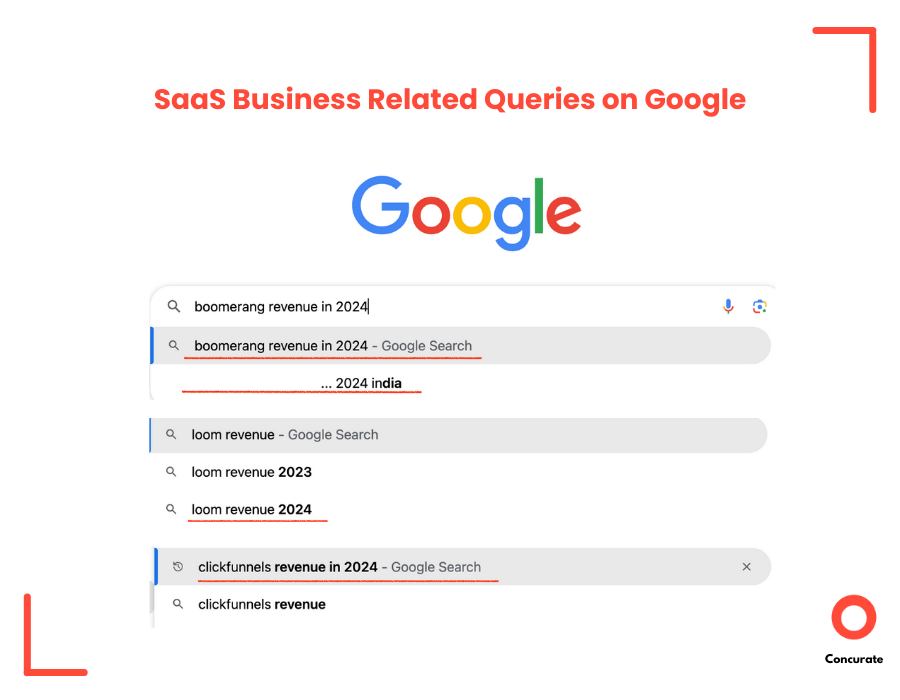
To address these queries, GetLatka employs a programmatic SEO strategy to create content-packed pages that answer the most asked questions. The company dynamically generates web pages for each SaaS company in its database. These pages have a structured template that automatically pulls data, including keyword-optimized descriptions and founder interviews.
For instance, these pages target high-intent queries like “boomerang revenue in 2024” or “clickfunnels revenue in 2024.” As shown in the image, this strategy enables GetLatka to rank high for a broad range of long-tail keywords and SaaS company names, helping investors, entrepreneurs, or decision-makers to easily find the information they need.
GetLatka’s data-driven approach mirrors the strategies detailed in our blog, How 6 Sense Boosts Revenue with Data-Driven Precision Marketing, where we discuss the power of precision targeting in capturing high-value audiences and driving growth.
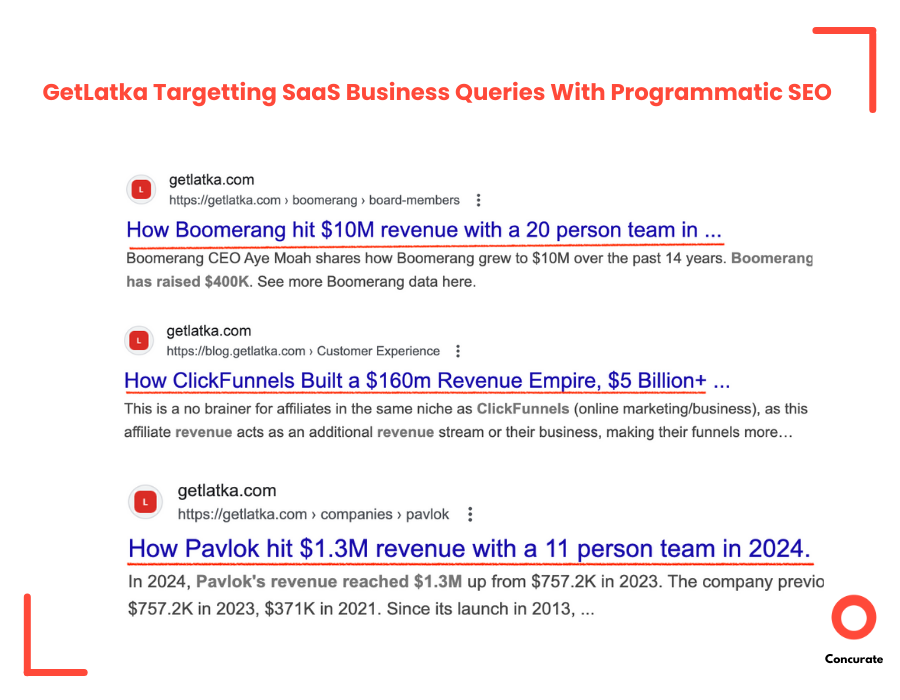
Recommended Read: Programmatic SEO For B2B: 3 Lessons From Storylane’s Playbook
5. Datacipher
Datacipher, a valued client of ours at Concurate, is a leading provider of IT education services. It is also one of the top-rated global authorized training providers for Palo Alto Networks. By offering comprehensive training on firewall essentials, cloud security, threat detection, endpoint protection, and more, Datacipher has helped countless professionals upskill worldwide.
To address the growing demand for Palo Alto Networks training in local areas, Datacipher partnered with Concurate to design a programmatic SEO strategy that effectively targeted specific Google searches for these geographies (states and cities in the USA, Australia, India, etc.).

We used a template-based methodology to quickly create pages optimized for local searches, such as “Palo Alto training in Hyderabad,” “Palo Alto Training in California,” or “Palo Alto training in Perth.” As illustrated below, this strategy substantially improved Datacipher’s regional visibility and attracted a highly relevant audience.
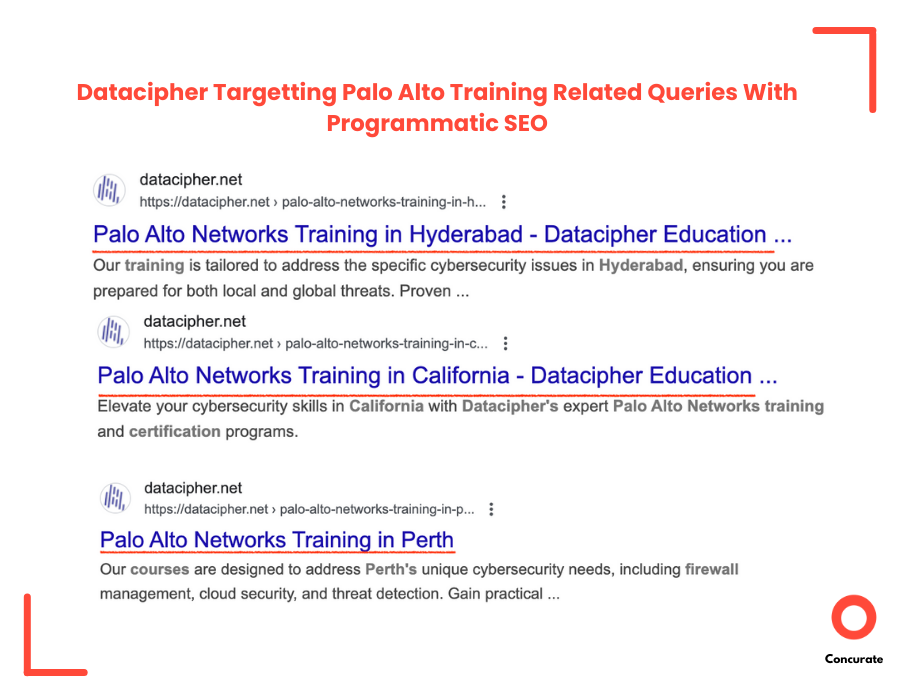
Concurate’s granular approach to programmatic SEO (specifically local SEO in this case) was incredibly rewarding for Datacipher. Not only did the strategy boost the client’s search engine rankings for local queries, but it also drove bookings for training sessions.
In a recent conversation, our client appeared ecstatic about the results we’ve achieved together. Datacipher’s success validates our Programmatic approach and fuels our motivation to continue to deliver transformative solutions for all our clients.
6. ElevenLabs
ElevenLabs needs no introduction. The company made waves in the AI voice cloning industry with its ultra-realistic audio generation capabilities, including speech synthesis, sound effects, and, most recently, music creation. Today, ElevenLabs is widely popular among podcasters, YouTubers, and enterprises across media, gaming, education, and customer service sectors.
The platform’s success isn’t just about cutting-edge technology. A smart programmatic SEO strategy also powers it.
According to Ahrefs data, ElevenLabs generates approximately 4.5 million organic visitors per month, with a significant portion of this traffic coming from its text-to-speech hub.
People frequently search for text-to-speech solutions in specific languages. ElevenLabs has built a hub-and-spoke model with its main text-to-speech page serving as the central hub and 76+ language-specific subpages acting as spokes, as shown below:
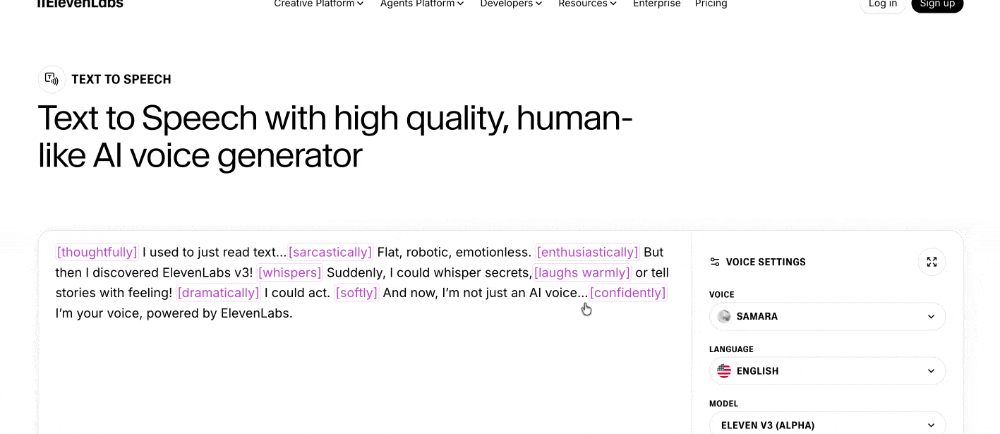
These include pages like Hindi Text-to-Speech, French Text-to-Speech, and Japanese Text-to-Speech.
Each subpage follows a consistent URL structure, page layout, and content framework, with language-specific variations tailored to the target keyword.

This programmatic approach creates a content ecosystem that captures high-intent traffic from users searching for text-to-speech solutions in their native languages. These landing pages then effectively direct visitors towards product trials and sign-ups.
Read more about ElevenLabs’ SEO strategies here: Programmatic SEO at Scale- ElevenLabs Playbook
So, what do we learn from all these programmatic SEO examples?
Key Takeaways From These Programmatic SEO Examples
“Strategy without tactics is the slowest route to victory. Tactics without strategy is the noise before defeat.” – Sun Tzu, The Art of War.
Sun Tzu’s wisdom highlights the need for balance—strategy sets the direction, and tactics drive results. Here’s how to apply both for programmatic SEO success:
- Start with Killer Keywords
Find keywords that hit the mark—whether it’s a product use case (“Jira for incident management”), a location (“Palo Alto training in Hyderabad”), or a specific need (“Christmas card template for free”). Nail the search intent, solve their problem, and you’re halfway there. - Templatize to Scale Like a Pro
Don’t reinvent the wheel every time. Use a consistent template for your pages—whether through WordPress, a programmatic SEO tool, or manual creation. Keep core elements (layout, structure) the same, but sprinkle in specifics like examples, guides, or custom data to make each page feel fresh. - Drive Action with Strong CTAs
Give your audience a reason to stay. Add CTAs that make them click: download a resource, request a demo, sign up, or try the tool. Clear, bold, and impossible to ignore. - Scale Smarter, Not Cheaper
Scaling doesn’t mean cutting corners. Every page must deliver real value—guides, insights, or answers that build trust and rank high. If it’s shallow, it’ll flop. - Focus on Intent-Ready Visitors
Long-tail keywords are where the magic happens. Attract people who are ready to take action, not just browse. Be specific, helpful, and hyper-relevant.
Want to dominate your niche? Let’s go.
Need a Programmatic SEO Strategy for Your B2B SaaS Products or Services?
As is evident, programmatic SEO has the power to drive excellent search visibility and capture high-intent traffic–from Zapier’s integration-specific pages to Datacipher’s targeted, localized SEO pages.
And at Concurate, we specialize in turning these strategies into tangible results.
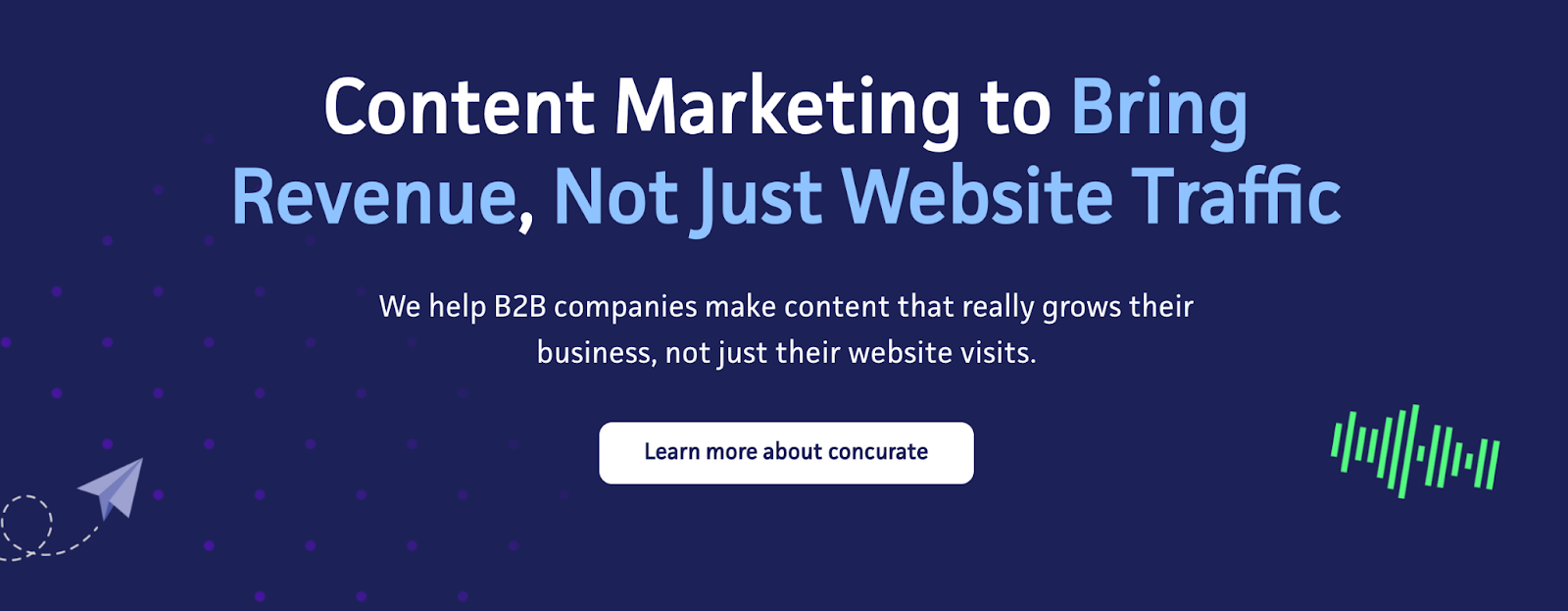
With our expertise, we help SaaS businesses devise and execute programmatic SEO campaigns that not only translate to higher rankings but also resonate with their target audience to drive leads and user signups.
Ready to dominate your niche with programmatic SEO strategies? Connect with us today to discover what will work best for your business.
Frequently Asked Questions About Programmatic SEO Examples
Curious about how programmatic SEO really works or how to apply it to your own SaaS business? You’re not alone. After seeing real-world programmatic SEO examples, it’s only natural to have some follow-up questions.
Right below, we’ve answered the most common ones to help you confidently explore (or scale) your own programmatic SEO strategy.
What is SEO Strategy?
An SEO strategy is your game plan for getting found on search engines like Google. It’s about figuring out what your audience is searching for, creating content that answers those questions, and optimizing your website so it ranks well in search results. Whether it’s blog posts, landing pages, or product pages, everything works together to bring in more of the right traffic to your site.
How Does Programmatic SEO Help SaaS Companies?
Programmatic SEO is a game-changer for SaaS brands. It helps you rank for super-specific keywords like “Jira for project management” or “ClickFunnels revenue in 2025.”
Here’s what it really helps with:
- You show up in front of people actively searching for your tool or use case.
- You attract high-intent users who are ready to sign up or book a demo.
- You scale content fast without sacrificing quality due to smart templates.
- And most importantly, you turn that traffic into leads using strong CTAs placed right where they matter.
How is Programmatic SEO Different From Regular SEO?
Think of regular SEO like crafting high-quality blog posts, one at a time. Programmatic SEO, on the other hand, is more like building a content machine. You create templates and automate content creation across hundreds (or thousands!) of pages, especially for long-tail searches. It’s not about replacing quality. It’s about scaling it smartly.
Can Programmatic SEO Hurt My Website?
Yep, it definitely can, if it’s done the wrong way. If your pages are thin, duplicate each other, or offer no real value, Google will notice, and your rankings can tank. But if done right, it can drive massive growth.
That’s where we come in.
At Concurate, we build programmatic SEO strategies that actually help users and search engines. If you’re not sure where to start, let’s chat. We’d love to help.
Claim Your Free Strategy Session Now.
What Other Expertise Do You Have?
We don’t just do programmatic SEO. We’ve got you covered across the board:
- Traditional SEO for blogs, product pages, and thought leadership.
- Programmatic SEO to scale content efficiently.
- AI SEO for SaaS—yes, we help you show up in tools like ChatGPT and Perplexity.
Oh, and fun fact! We recently helped a client outrank high-authority (DR 80+) websites and take the #1 spot in three different countries. Check out our SaaS SEO case study.
How Do I Ensure My Programmatic Pages Get Indexed by Google?
Creating thousands of programmatic pages is only half the battle. However, you also need to make sure Google can actually crawl and index them properly.
Technical issues like broken internal links, redirect chains, sitemap errors, and pagination problems can prevent your pages from ever reaching Google’s index, no matter how good the content is.
Before scaling your programmatic SEO strategy, it’s crucial to have a solid technical foundation. This means fixing crawl errors, optimizing site speed, ensuring proper URL structures, and maintaining a clean sitemap.
Want to see how technical fixes can dramatically improve your site’s performance? Check out our technical SEO case study where we increased a client’s site health score from 73 to 89 and resolved 99.9% of their technical errors.
Want to hack your SaaS growth with some proven hacks? Download our handbook below.
Disclaimer: The information provided in this article is based solely on publicly available sources and is intended for general informational and guidance purposes only. It should not be relied upon as a final decision-making resource or as a substitute for professional advice. While we strive for accuracy and completeness, we make no representations or warranties regarding the correctness of the content. If you believe any information should be updated, corrected, or removed, please contact our team for review.


